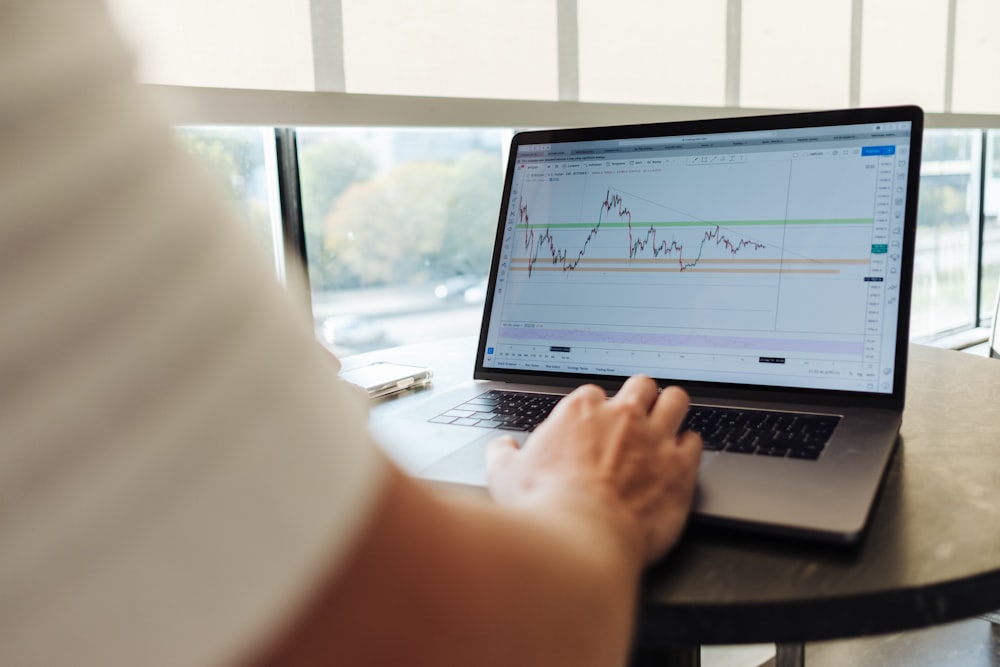Asia Open: Navigating The High-Stakes Coin Flip Of Global Trade And Tariffs
Image Source: Unsplash
The first whole trading week of 2025 started with a resurgence in stock market optimism, driven by traders with fresh annual budgets and a renewed appetite for risk. After a brief but pronounced thematic shift away from mega-cap tech leadership at the end of last year—a move that quashed the expected Santa Rally—investors are eagerly buying back into these dips. This surge is fueled by anticipations of an accelerated AI GPU arms race and a Federal Reserve soft landing, all supported by subdued VIX levels. As investors buy the dip, there is little pushback from volatility-controlled funds.**
After a bumpy few weeks filled with holiday disruptions, U.S. stocks have regained their footing, bolstered by an underlying brisk growth outlook and hopes for tax cuts. Traders are now cautiously focusing on the upcoming fourth-quarter earnings season, with a keen focus on the mega-tech sector. Considering its substantial impact on broader market indices, this sector's performance could significantly influence market directions.
As the year begins, the financial landscape is marked by rising U.S. stocks and yields, with the dollar maintaining its dominance. This sets the stage for the markets, which are now strategically positioning themselves in anticipation of Donald Trump's inauguration as President on January 20th. The convergence of these financial indicators points to a heightened alert among traders, who carefully calibrate’/ their strategies for potential shifts in policy and economic directives that the new administration may bring.
However, not all is smooth sailing. Investors are cautiously eyeing the uptick in long-term yields, from 10-year to 30-year bonds, which reflect growing concerns over the fiscal impacts of tax cuts and long-term inflation uncertainties. This nervousness is compounded by the New York Federal Reserve's indication that the 'term premium' for 10-year bonds—a gauge of the extra yield investors demand to hold longer-term debt—is at its highest since 2015. This premium increase is primarily attributed to expectations that the U.S. will issue bonds of longer durations and increased coupon sizes under Treasury head Scott Bessent. This leads to larger Treasury auctions when traditional institutional and international buyers are less active in the bond markets.
In Asia, markets might ride a buoyant wave on Tuesday, spurred by an animating report hinting that U.S. President-elect Donald Trump might dial back his fiery tariff tantrum. While Trump quickly denounced the Washington Post's narrative around a more measured approach to tariffs as mere speculation, the market couldn't help but wonder if substance was behind the smoke. This glimmer of hope has nurtured a growing belief among investors and top executives worldwide, who are now clinging to the prospect of a "Negotiator in Chief" rather than the feared "Tariff Man." This shift in sentiment has slightly eased the fervent scramble for dollars that marked the lead-up to the inauguration.
Even Howard Lutnick, the newly appointed Tariff Czar, underscored the report's credibility during a CNBC interview before the election by advocating for tariffs solely on “goods we make.” This aligns with a more measured approach to trade, lending a sense of rationality to the discussions surrounding Trump's tariff strategy.
Yet the capricious nature of Trump's past tariff declarations, often as whimsical as the morning's mood, paints a picture of unpredictability. This looming volatility promises a thrilling, if nerve-wracking, start to Trump's term. Markets brace for a presidency whose policies could pivot on a dime, keeping traders and global markets on their toes.
The dollar's rollercoaster response to the news—plummeting on the initial headline before Trump's rebuttal spurred a rebound—underscores the potential for wild swings as Trump's first quarter in office unfolds.
Welcome to the high-stakes coin flip of global trade! If U.S. tariffs prove lighter than Trump's fiery campaign promises, focusing solely on "critical" sectors, we might just spark a brighter outlook for global growth, potentially easing the dollar's dominance. This scenario could ignite a rally in Asian and emerging markets. However, if Trump remains true to his tough pre-election pledges and his fiery rhetoric on 'Truth Social,' expect a whirlwind of market volatility and a squeeze on risky assets as the world braces for the unpredictable impacts of his trade policies.
FOREX MARKETS
In the global forex arena, all eyes are fixed on the Yen and Yuan, navigating a backdrop of rising term premiums and climbing real rates in the U.S. In Japan, yields have soared to their highest in years following Governor Kazuo Ueda's indication of potential further rate hikes, yet the Yen remains stubbornly anchored around 158.00 per dollar.
Contrasting sharply with Japan's tightening stance, China is veering towards monetary easing. As U.S. bond term premiums build and the Fed adopts a hawkish outlook, expectations are rising for a rate cut by China. Such a policy shift is poised to weaken the Yuan further, adding a new layer of complexity to forex market dynamics.
OIL MARKETS
Oil prices have softened as the immediate impacts of increased heating oil demand from U.S. winter storms may have reached a new short-term equilibrium or possibly peaked. Attention in the markets has shifted back to medium-term factors, where oil is expected to face tepid demand growth. This modest uptick in demand could be eclipsed by burgeoning supply, particularly from U.S. producers, casting a shadow over future oil price trajectories.
**Many quant and fast money funds, now the major drivers of market flow, focus on building models designed to predict and front-run volatility-driven models. They prioritize this approach over traditional methods that forecast revenue and earnings. This strategy reflects a shift towards leveraging algorithmic trading techniques to capitalize on market inefficiencies and short-term movements rather than relying on long-term financial projections.
More By This Author:
Asia Open: The Dragon Economy Faces Severe Distress
The Curtain May Be Closing In 2024, But The Drama On Wall Street Is Set To Intensify
Bracing For A Slippery Penultimate Trading Day Of 2024




